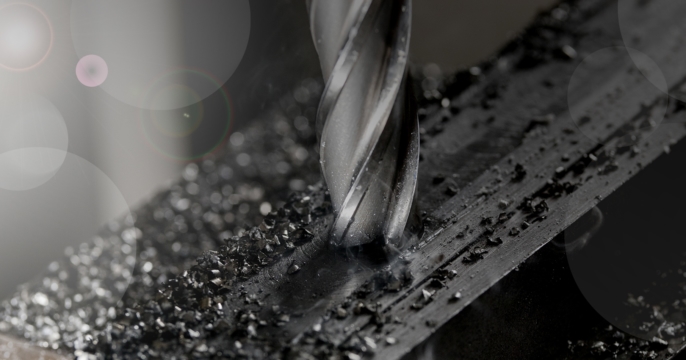
Why a Makino isn’t enough
Stop competing on price! Learn how to combat commoditization — exemplified by the Makino’s effect on the manufacturing industry.
At Kinesis, we love a great story. Especially when it involves local entrepreneurs who defy the odds.
People who know me know that I'm passionate about great design, architecture, and green building; I'm always on the lookout for outstanding Portland firms. While there are many exceptional artisans, few combine their craft with savvy marketing like the team over at Hammer and Hand.
Hoping to inspire and educate, I asked H&H's Chief Evangelist, Zacke Semke and founder, Sam Hagerman to share some of their business experiences and marketing insights.
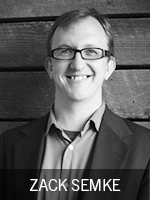

SAM: Hammer & Hand is a company of nearly 75 carpenters and building science technicians dedicated to the notion that better living comes through better building. Our employees are passionate about craft and tradition, but also about the way buildings perform, the efficiency and comfort that they confer to the people who inhabit them.
It’s inspiring and gratifying to be part of it all. When Daniel and I started the company 18 years ago we were just another couple of carpenters working on old Portland houses. But a few months in we asked ourselves, “why don’t we do this right, get licensed, build a business, and see where it leads?” Things quickly developed from there, and before long we were trading in our tool belts for jackets and ties and focusing more and more on visioning, management, and the entrepreneurial work of developing a business. But we didn’t have any of that expertise going into it at the beginning. We did know that we wanted the company to be about something bigger than just he and I, however. That’s why we called it “Hammer and Hand” and not “Thomas and Hagerman.”
SAM: When the market got so overheated leading up to the crash that essentially anybody could walk off the street and borrow hundreds of thousands with no real vetting process of one’s assets, income or liabilities, we could see that the industry, and the economy as a whole, was in for a big hit. So Daniel and I began working to make the company more resilient. The main goal was to protect Hammer & Hand’s core, our employees. Our strategy was to sandbag around the core with a series of new business ventures. Happily, we were able to weather the storm without laying anyone off, and in the last few years we’ve nearly doubled our staff and tripled production.
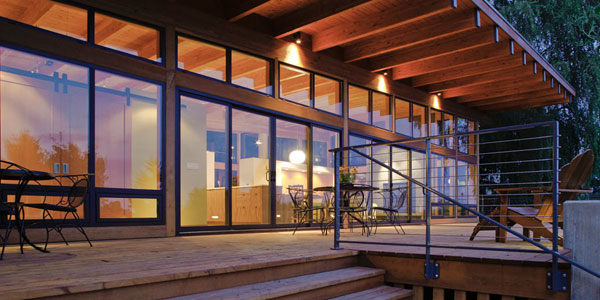
SAM: We tried several new initiatives. We started building and selling upcycled furniture. We opened a new Retail Studio in the Pearl. We launched a home performance division dedicated to providing home energy audits, primarily through Clean Energy Works Oregon. And we got pretty heavily involved in the high performance building and Passive House movements. All of these ventures are still going strong, but the element that really took hold and began to drive strategic change and innovation at Hammer & Hand has been the Passive House/building science work. We’re harnessing a new, cutting-edge understanding of how building systems function and interact that’s allowing us to build structures that use up to 80% less energy than conventional structures. It’s pretty revolutionary. And the comfort and health that these buildings bring to inhabitants is totally unparalleled. So the marketplace has transformed, but so has Hammer & Hand, and we’re really excited about this “new normal” we’re in.
SAM: Of course there are the normal “coulda-shoulda-wouldas” that you only see with 20/20 hindsight, but no I don’t have any regrets other than the time my work took away from my young family, but we made it out great! We were lucky to push into new ways of doing business during this whole industry/economic crisis, and I’m really happy with where we’re at.
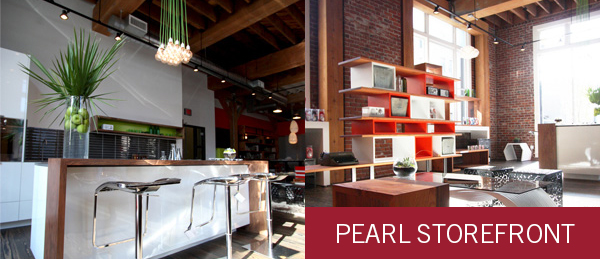
SAM: Like so much of our entrepreneurial experience with Hammer & Hand, our Retail Studio in the Pearl has been a process of evolution. The initial impetus for the space was as a storefront to show our upcycled furniture. We had all of these beautifully designed and crafted pieces, rich with narrative, that were only viewable online. But when we found the retail space on the corner of 10th and Flanders, right on the streetcar line, we knew that Retail Studio would also be a three-dimensional billboard for our core business: building and remodeling the best of Portland. So the space, a collaborative venture with our colleagues at bright designlab, now marries together key aspects of Hammer & Hand’s business under one roof: retail TI work, commercial construction, condo and loft remodeling, and upcycled furniture.
ZACK: This is really topical for us right now, actually. As Hammer & Hand has evolved over the last few years, the way we communicate about who we are is evolving as well. And I’ve been getting some good inspiration and insight from Marty Neumeier’s book, “Zag.”
Hammer & Hand’s “brand” has been carefully built and developed over the years around two key aspects of the company. First is the notion that only by servicing the employee – providing full health and dental insurance, paid vacation, 401k, profit sharing, a living wage, and support for professional and artisanal development – can we produce the passion and excellence necessary to provide a really exemplary experience and product for the client. Second is Hammer & Hand’s steadfast dedication to centuries-old traditions of craftsmanship, handed down from master to apprentice over and over again, that enables the company to execute everything from the most old-school Victorian restorations to the cleanest of modernist jewels.
But a third key element of differentiation has emerged for Hammer & Hand recently, and that’s our commitment to building science and high performance building. Earthy-crunchy notions of “green building” are becoming passé now. What we’re talking about is more akin to the performance of an Audi, or maybe more appropriately, a Prius. We as an industry now have the building science knowledge and technique at our disposal to build structures that consume 90% less energy than conventional buildings, provide a constant supply of oxygen-rich fresh air, envelope inhabitants in 70 degree temps – all at very small cost premiums. But most of our competitors are being caught flat-footed on this. That’s perhaps sad for the industry, but great news for us as a company. We’re gaining a nice competitive advantage and key differentiation.
SAM: We see our marketing efforts as a natural outgrowth of our education and advocacy work in the community. Our marketing work is an organic process that responds to the visioning that’s going on in the company. I don’t think marketing efforts work when they’re bolted-on, disconnected from a company’s core. If it doesn’t arrive directly from what’s within the company, then it isn’t worth much.
ZACK: I totally agree, and I see our marketing work as a storytelling endeavor. And, to be clear, by “storytelling” I don’t mean fiction. We’re telling real stories about client experiences, design challenges, triumphs of craft, technical breakthroughs – all authentically inspiring stuff. Hammer & Hand, like any well-run strategically-minded company, has more cool stories to tell than we have the time or bandwidth to share. So our marketing is aimed at selecting the most compelling stories and sharing them far and wide.
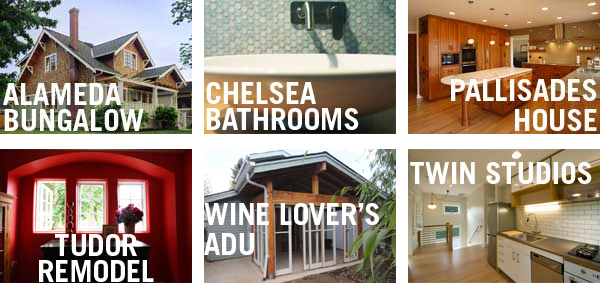
ZACK: My advice would be to stick with the essence of what you have to say, and don’t obsess about the specific medium. After all, a “social media strategy” is bereft without good content (Note: “content” = “stories”). If you can figure out how to weave a compelling narrative about your work, the details about how to share that on social media, your blog, the web, direct marketing, whatever, will sort itself out. Social media marketing gurus are fond of citing the importance of WIITFM, or “what’s in it for me?” The idea is that people will only engage with a given mar-com channel when they feel there’s some benefit to them. My experience is that a good story provides that benefit. And people love to share a good story.
SAM: Rejuvenation had a great run and tells a wonderful story about up-cycling and growth. New Seasons seems generally committed to the well-being of their employees. There are some great start-ups I’ve been watching like Soup Cycle, GoBox that are part of the dynamic food scene here in Portland. And of course I should mention my dear friends at Salt and Straw, the consummate masters of vision-based marketing. Go Kim!
SAM: We definitely foresee a big emphasis on high performance building and Passive House for Hammer & Hand, both in the commercial and residential realms. We’re also expanding our work into the Seattle market, which is a big, exciting move for us. While there are lots of great contractors up there, we believe that Hammer & Hand’s tripartite focus on the employee, craftsmanship, and building science offers something new and unique…and profitable!
Footnote: A big thank you to Sam and Zack for their time. If you know other businesses that look small but act big, let me know. We'd love to feature them in our blog and newsletter.
Get insights like this straight to your inbox.